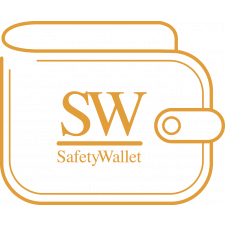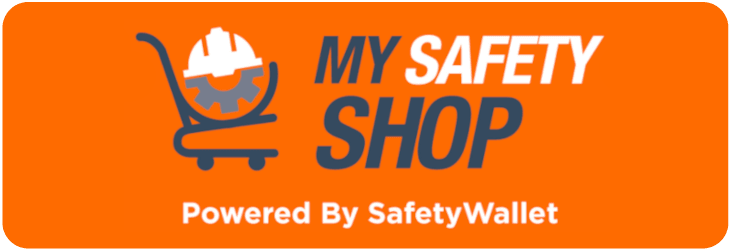Health and Safety Guidance on a Risk Assessment
What is a Risk Assessment?
A risk assessment is a written document which records the process involved with hazard identification in the workplace under the control of the employer, evaluation of the risks which are associated with the identified hazards, and the implementation of controls to eliminate the hazard or reduce the harm that they can cause.
What is a safety statement?
A safety statement is a written commitment of the employer to manage health and safety in the organisation and it must include the following:
- The health and safety policy of the organisation.
- The result of the assessment.
- The names as well as job titles of the persons responsible for health and safety matters.
- The duties of employers as well as employees. This must include the cooperation needed from employees regarding health and safety matters.
- The commitment of the employer towards employee consultation and participation. This will include arrangements needed to appoint health and safety representatives.
- Arrangements towards welfare.
- Plans and procedures for handling emergencies.
- Arrangements to ensure the health and safety of young employees, pregnant employees, and visitors to the workplace.
- Personal Protective Equipment (PPE) policies and the registers for equipment.
- First Aid as well as Fire Safety procedures including details about the equipment and facilities available.
- Procedures for accident reporting and investigation.
- Training records.
Why must a risk assessment and safety statement be prepared?
There are several crucial reasons why the assessment and the safety statement must be prepared, including:
- It is a legal requirement.
- It is good for business efficiency.
- It is the right thing to do.
For all your Health and Safety and Risk Assessment needs or assistance, click on the image below:
MAKROSAFE / SAFETYWALLET / MY SAFETY SHOP are all in Partnership.
Step 1 – Hazard Identification
This step involves the identification of hazards, whether they are physical, health, chemical, or hazards pertaining to human factors, or psychosocial hazards.
There are some hazards which are obvious, such as unguarded moving parts on equipment and machines, dangerous fumes, working at heights, and several others. However, the less obvious hazards are the root of many accidents and it is imperative for these to be identified, evaluated, eliminated, or controlled.
Step 2 – Risk Evaluation
A risk involves the likelihood that someone will be harmed, and how serious the harm will be. Risks depends on one or several people who may be exposed to the hazard, and in assessing the risk, the following must be considered:
- How likely it is that the hazard will cause harm.
- What is the severity of the harm?
- How often, and how many workers are exposed to a particular hazard?
There is a variety of methods for assessments to be carried out that comply with legal requirements. It will depend on the organisation’s own processes and industry that will determine the type of risk assessment and the frequency.
Risks can be ranked from high to low, and according to the these, the more significant risks must be prioritised first when control measures are implemented.
Step 3 – Control Measures
Life cannot be risk-free; however, employers are required by law to do all that is reasonably practicable to minimise the risk of injury to employees, and others. Employers have done all that is reasonably practicable by:
- Ensuring that all hazards and risks relating to the workplace are identified.
- Implementing effective and appropriate control measures such that it would be grossly disproportionate to do more.
- Communicating the assessment and control measures to all employees.
When control measures are considered, it is imperative that employers ask the following questions:
- Can the hazard be eliminated?
- Can the work, task, or activity be modified or changed to make it safer?
- If not, which safety precautions are necessary to control the risk?
The first and most preferred step is for the hazard to be eliminated. However, this is not always possible, and it is therefore necessary for control measures to be implemented to deal with the risk so that the likelihood and severity of harm can be minimised.
Some common control measures include, but is not limited to:
- Ensuring that the workplace is tidy and maintained to prevent slips, trips, and falls.
- The use of harnesses or safety nets where work at heights is required to prevent the risk of falling from heights.
- Adapting work to the individual and providing adjustable work surfaces, chairs, and other equipment.
- Isolating machines or switching equipment off when repairs, maintenance, and alterations are done, and to ensure that work like this is clearly communicated and that signage and barricading/demarcation is in place.
Step 4 – Recording the findings
All significant findings in the risk assessment must be recorded and employees must be informed of the control measures that have been implemented. By communicating with employees, the employer can ensure that:
- Employees understand what is expected of them.
- Employees know who is responsible for implementing the control measures and additional controls, and by when.
- Employees are encouraged to monitor the effectiveness of the control measures and to communicate if, and when, they feel additional measures are necessary.
To simplify the processes, the safety statement can refer to procedures in other documents or databases that employees are familiar with and that they can easily access such as:
- Quality manuals
- Safe Operating Procedures
- Company rules and policies
- Material Safety Data Sheets
- Owner’s manuals and manufacturer’s guidelines.
- Company health and safety procedures.
How is a Safety Statement Prepared?
Employers must ensure that a safety statement is prepared. This document specifies how the health, safety, and wellbeing of employees will be ensured, secured, and managed. It is considered the cornerstone document for safety management in any workplace and can be broken down into four sections:
- Health and Safety Policies – which is a commitment towards ensuring that the workplace is healthy and safe and that the relevant requirements will be complied with.
- Safety Arrangements and Information – which outlines the employer’s approach and commitment towards different aspects of health and safety management.
- Forms and Records – which includes responsible person registers, emergency contact information, induction and training registers, personal protective equipment registers, and several others.
- The Risk Assessment and action list – which involves the hazards identified, risk evaluation, and the relevant control measures that have been implemented.
How does SafetyWallet support its subscribers?
SafetyWallet, in partnership with MAKROSAFE and OHS Online, ensures that subscribers can obtain the highest level of compliance with the Occupational Health and Safety Act 85 of 1993, all other Regulations, and more.
Through the assistance and support in the health and safety programme of the subscriber, SafetyWallet helps subscribers with the health and safety risk assessments that must be conducted to ensure that subscribers are compliant in providing a healthy and safe working environment.
Click on the image below to find a SafetyWallet Solution that suits your business (Branch/Site specific) and get the benefits along with the subscription:
Keeping your workplace legally Health and Safety Compliant may seem like a daunting task. At MAKROSAFE, we have an experienced team of OHS experts available to assist in keeping your company Health and Safety Compliant according to South African Occupational Health and Safety Act 85 of 1993 and Regulations.
The MAKROSAFE Health and Safety Risk Control Package will assist you with your Risk Management Programme.
By signing up with our Health and Safety Risk Control Package, MAKROSAFE will assist you with your Risk Management journey.

-Health-and-Safety-Guidance-on-a-Risk-Assessment-Banner-1.jpg)






Comments (2)
Nice article Thanks for sharing this interesting article
2022-10-07 14:07:45Dear Rubini Thank you for your comment and positive feedback... Follow this link to purchase your Risk Assessment: https://www.mysafetyshop.co.za/Shop/Category/Risk-Assessment
2022-10-10 09:50:18Employees know who is responsible for implementing the control measures and additional controls, and by when.
2022-11-09 13:55:29Dear Aditya Thank you for your comment, we do appreciate it... Follow this link for our Health and Safety Risk Assessment Package that includes up to 25 Tasks: https://www.mysafetyshop.co.za/Products/The-Health-and-Safety-Risk-Assessment-Package-Up-to-25-Tasks
2022-11-10 07:48:34